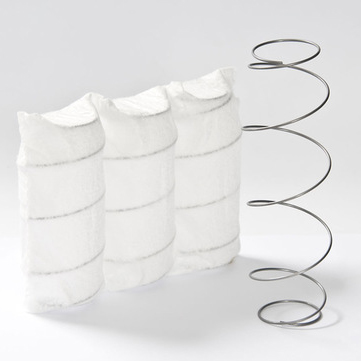The characteristics and advantages of polypropylene spunbond non-woven fabrics, polypropylene spunbond non-woven fabrics are a kind of non-woven fabrics. . Because the technological process is simple, the output is large, and it is non-toxic and harmless to the human body. Therefore, it is widely used in sanitary materials, and other fields.
Features and Benefits
The important reason for the rapid development of the spunbond method is that it uses synthetic polymers as raw materials. This method uses the principle of chemical fiber spinning. In the process of polymer spinning, continuous filaments are directly bonded after spinning. Non-woven fabrics, the manufacturing method is very simple and fast. Compared with dry non-woven fabric processing technology, it saves a series of tedious intermediate processes such as fiber curling, cutting, packaging, transportation, mixing and carding. The most significant effect of mass production is that spunbond products can be reduced in cost, stable in quality, and highly competitive in the market. They can enter the market fields of textiles, paper and films in various applications of disposable and durability. Secondly, since spunbond non-woven fabrics use a large amount of polypropylene as the main raw material, it has many advantages in terms of price, processing process, production cost, etc., which also greatly promotes the sustainable development of the spunbond non-woven fabric industry. In addition, spunbond nonwoven products have excellent mechanical properties, and their tensile strength, elongation at break, tear strength and other indicators are better than dry, wet, and meltblown nonwovens, especially in recent years, spunbond The rapid development in production line scale, technology and equipment and product market development has greatly expanded the application field of spunbond non-woven fabrics.
The biggest difference between the production process of spunbonding and chemical fiber spinning is the use of air drafting and direct web formation. Therefore, the drafting of spunbonding has become a core technical problem. In the past, mechanical drafting was used. Thicker and unevenly laid. At present, spunbond production equipment all over the world has adopted air drafting technology. Due to different air drafting methods, there are three different forms of spunbond production line, namely tubular drafting, wide-slot drafting, and narrow-slot drafting. Extend and so on.
Spunbond non-woven technology has always been to improve the ability of the production line and solve the problems of uniformity, covering and rough hand of non-woven fabrics, so as to improve the strength, softness, uniformity and comfort of spunbond non-woven fabrics. , hygroscopicity and other properties.
————–Written by – Amber
Post time: Jan-17-2022








